
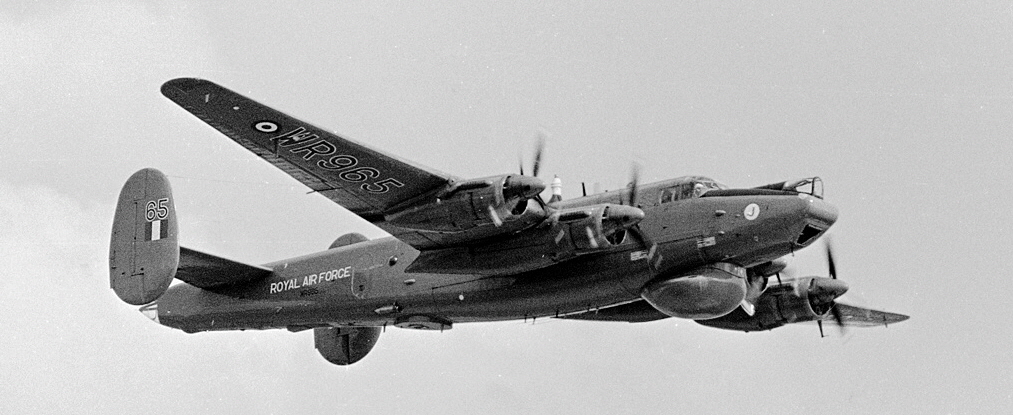
The Avro Shackleton was a long-range maritime patrol aircraft for use by the Royal Air Force and it was developed by Avro from the Avro Lincoln bomber with a new fuselage. It was originally used primarily in the antisubmarine warfare (ASW) and maritime patrol aircraft (MPA) roles, and was later adapted for airborne early warning (AEW), Search and Rescue (SAR) and other roles from 1951 until 1990. It also served in the South African Air Force from 1957 to 1984. The type was named after the polar explorer Sir Ernest Shackleton. With an impressive endurance of nearly 15 hours, a total of 185 Shackletons were built from 1951 to 1958: around 12 are still believed to be intact, with one still airworthy in South Africa, but not flying due to a lack of qualified crew members.
All marks of Shackleton suffered from using the Griffon engines - thirsty for fuel and oil, noisy and temperamental with high-maintenance needs. In 1961, the MR2 variant’s engines needed top overhauls every 400 hours and went through a spate of ejecting spark plugs from their cylinder heads. Apparently it was not unusual to see an engine changed every day in a unit of six aircraft. They were constantly on the cusp of being replaced, but the potentially beneficial Napier Nomad re-engine modification did not happen. During the 1960s, the typical Shackleton crew comprised two pilots, two navigators, a flight engineer, an air electronics officer, and four air electronics operators. During this period, equipment upgrades has become routine in order to keep pace with ever-increasingly capable submarines; separately issues with the fatigue life of the airframe had been identified, leading to multiple programs being carried out to strengthen the aircraft and thus extend its viable service life. In 1966, nuclear depth charges were introduced to the Shackleton's arsenal with the aim of countering the Soviet's development of deep-diving submarines.
Maritime reconnaissance was a large element of the Shackleton's service, this mission was often performed to identify and monitor naval and merchant shipping and to demonstrate sovereignty. During the Indonesia / Malaysia confrontation in the 1960s, Shackletons monitored the seas for vessels involved in arms smuggling and similar operations were conducted in Cyprus; Shackletons operating from bases in Madagascar cooperated with Royal Navy vessels to enforce a United Nation-mandated oil blockade of Rhodesia
The Shackleton would often be used in to perform search and rescue missions and at all times one crew was kept on standby somewhere across the UK for this role. Shackletons were used in the Aden Protectorate during the Radfan Emergency against rebel tribesmen in Colonial Policing Operations when leaflets would be dropped warning the tribes to vacate their properties which would then be bombed after they left.The need to replace the Shackleton was first raised in the early 1960s. The arrival of the Hawker Siddeley Nimrod in 1969 was the end for the Shackleton in most roles but it continued as the main SAR aircraft until 1972. The intention to retire the aircraft was then thwarted by the need for Airborne Early Warning coverage in the North Sea and northern Atlantic following the retirement of the Fairey Gannet. With a new design not due until the late 1970s, the existing AEW radar was installed in modified Shackleton MR2 aircraft, redesignated AEW2, as an interim measure from 1972. The eventual successor to the Shackleton AEW did not arrive until the RAF finally abandoned the Nimrod AEW3 and purchased the Boeing E-3 Sentry in 1991.
John Hutchinson was an RAF pilot flying these iconic British aircraft from an RAF station in Singapore in the late 1950’s on both 205 and 209 Squadrons.
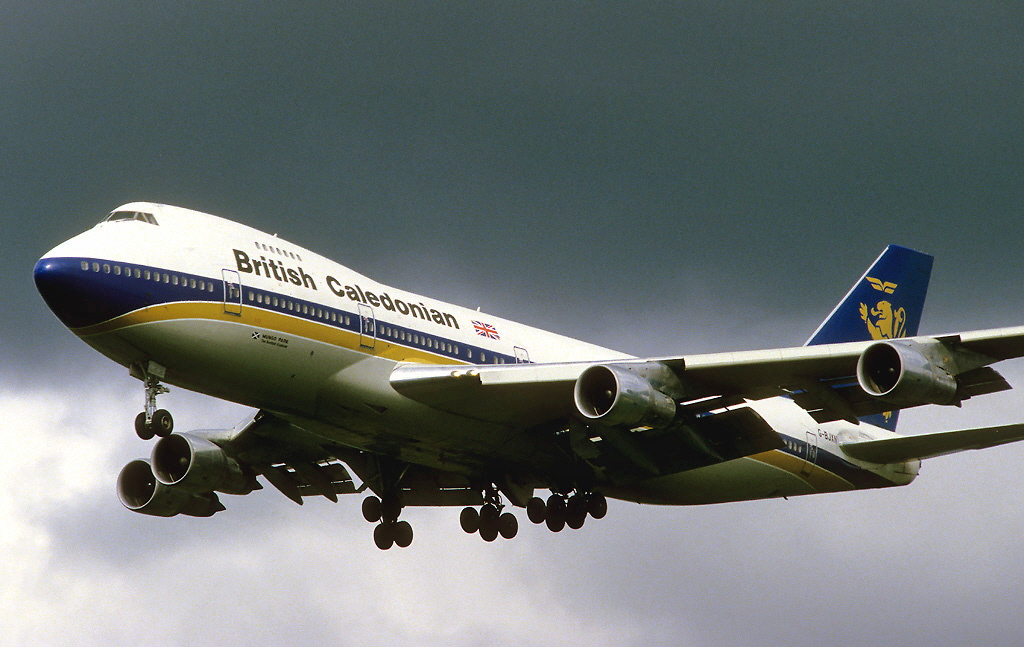 The Boeing 747 is a wide-body commercial airliner and cargo transport aircraft, often referred to by its original nickname, The Jumbo Jet. The 747 was conceived while air travel was increasing in the 1960s. The era of commercial jet transportation, led by the enormous popularity of the Boeing 707 and Douglas DC-8, had revolutionised long-distance travel. Boeing was pressed by Juan Trippe, president of Pan American World Airways (Pan Am), one of its most important airline customers, to build a passenger aircraft more than twice the size of the 707. During this time, airport congestion, worsened by increasing numbers of passengers carried on relatively small aircraft, became a problem that Trippe thought could be addressed by a large new aircraft. It is among the world's most recognisable aircraft, and was the first wide-body ever produced. Manufactured by Boeing's Commercial Airplane unit in the United States, the original version of the 747 was two and a half times the size of the Boeing 707, one of the common large commercial aircraft of the 1960s. First flown commercially in 1970, the 747 held the passenger capacity record for 37 years.
The Boeing 747 is a wide-body commercial airliner and cargo transport aircraft, often referred to by its original nickname, The Jumbo Jet. The 747 was conceived while air travel was increasing in the 1960s. The era of commercial jet transportation, led by the enormous popularity of the Boeing 707 and Douglas DC-8, had revolutionised long-distance travel. Boeing was pressed by Juan Trippe, president of Pan American World Airways (Pan Am), one of its most important airline customers, to build a passenger aircraft more than twice the size of the 707. During this time, airport congestion, worsened by increasing numbers of passengers carried on relatively small aircraft, became a problem that Trippe thought could be addressed by a large new aircraft. It is among the world's most recognisable aircraft, and was the first wide-body ever produced. Manufactured by Boeing's Commercial Airplane unit in the United States, the original version of the 747 was two and a half times the size of the Boeing 707, one of the common large commercial aircraft of the 1960s. First flown commercially in 1970, the 747 held the passenger capacity record for 37 years.
The four-engine 747 uses a double deck configuration for part of its length. It is available in passenger, freighter and other versions. Boeing designed the 747's hump-like upper deck to serve as a first class lounge or (as is the general rule today) extra seating, and to allow the aircraft to be easily converted to a cargo carrier by removing seats and installing a front cargo door. Boeing did so because the company expected supersonic airliners (whose development was announced in the early 1960s) to render the 747 and other subsonic airliners obsolete, while believing that the demand for subsonic cargo aircraft would be robust into the future. The 747 in particular was expected to become obsolete after 400 were sold, but it exceeded its critics' expectations with production passing the 1,000 mark in 1993. By April 2014, 1,486 Boeing 747 aircraft had been built in many different variants, with 68 of the 747-8 variants remaining on order.

The 747-400, the most common passenger version in service, is among the fastest airliners in service with a high-subsonic cruise speed of Mach 0.85 to 0.855 (up to 570 mph). It has an intercontinental range of 7,260 nautical miles (8,350 statute miles). The 747-400 passenger version can accommodate 416 passengers in a typical three-class layout, 524 passengers in a typical two-class layout, or 660 passengers in a high density one-class configuration. The newest version of the aircraft, the 747-8, is in production and received certification in 2011.
 The Boeing 777 is a long-range wide-body twin-engine jet airliner manufactured by Boeing Commercial Airplanes. It is the world's largest twinjet and has a capacity of over 300 passengers, with a range of 5,235 to 9,380 nautical miles, depending on model. Commonly referred to as the "Triple Seven", its distinguishing features include the largest-diameter turbofan engines of any aircraft, six wheels on each main landing gear, a circular fuselage cross-section and a blade shaped tail cone. Developed in consultation with eight major airlines, the 777 was designed to replace older wide-body airliners and bridge the capacity difference between the 767 and 747. As Boeing's first fly-by-wire airliner, it has computer-mediated controls; it is also the first entirely computer-designed commercial aircraft.
The Boeing 777 is a long-range wide-body twin-engine jet airliner manufactured by Boeing Commercial Airplanes. It is the world's largest twinjet and has a capacity of over 300 passengers, with a range of 5,235 to 9,380 nautical miles, depending on model. Commonly referred to as the "Triple Seven", its distinguishing features include the largest-diameter turbofan engines of any aircraft, six wheels on each main landing gear, a circular fuselage cross-section and a blade shaped tail cone. Developed in consultation with eight major airlines, the 777 was designed to replace older wide-body airliners and bridge the capacity difference between the 767 and 747. As Boeing's first fly-by-wire airliner, it has computer-mediated controls; it is also the first entirely computer-designed commercial aircraft.
The 777 ranks as one of Boeing's best-selling models, selling over 1,000 aircraft to date. Because of rising fuel costs, airlines have acquired the type as a comparatively fuel-efficient alternative to other wide-body jets and have increasingly deployed the aircraft on long-haul transoceanic routes. Direct market competitors have included the Airbus A330-300, A340, McDonnell Douglas MD-11 and the A350. The new Boeing 787 Dreamliner, which entered service in 2011 with All Nippon Airways, shares design features with the 777.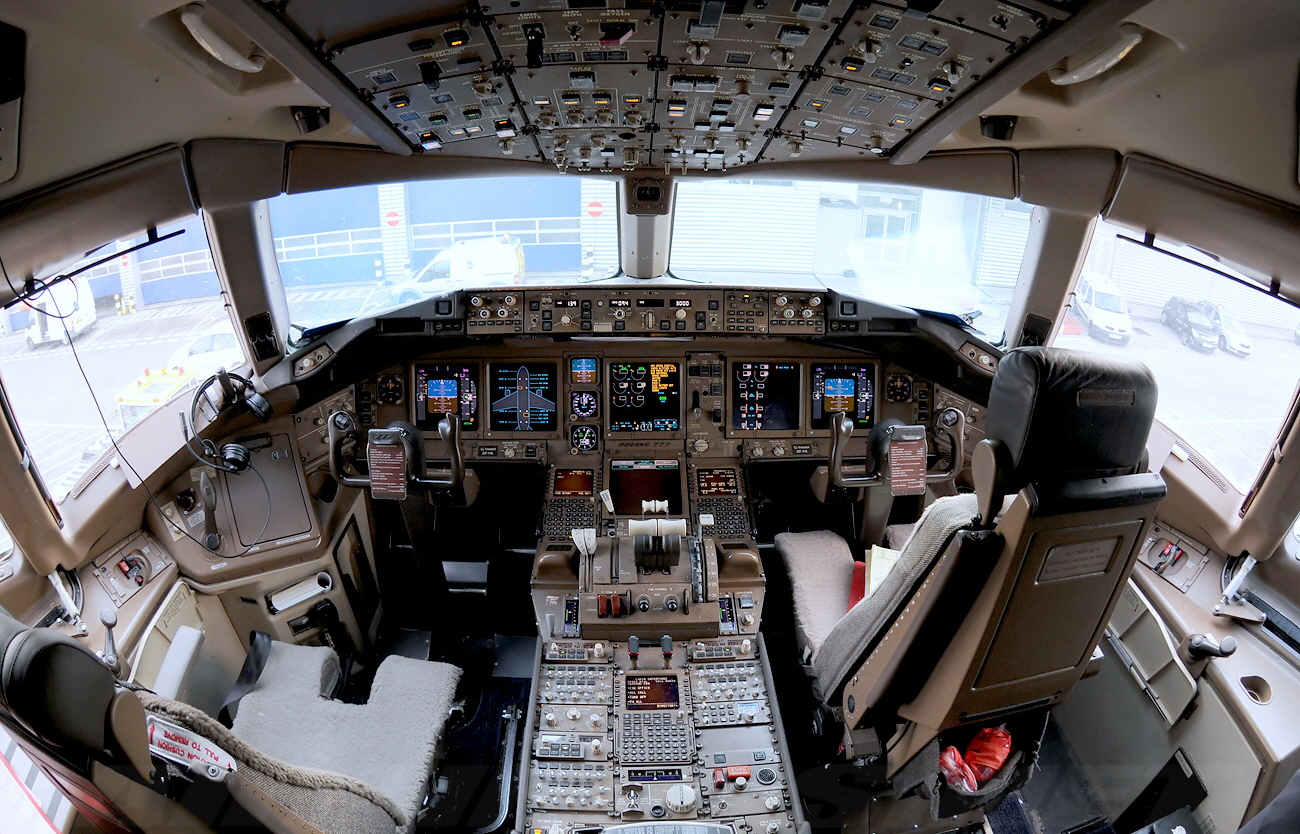
Boeing introduced a number of advanced technologies with the 777 design, including fully digital fly-by-wire controls, fully software-configurable avionics, glass cockpit flight displays, and the first use of a fibre optic avionics network on a commercial airliner. In designing the 777 as its first fly-by-wire commercial aircraft, Boeing decided to retain conventional control yokes rather than change to sidestick controllers as used in many fly-by-wire fighter aircraft and in many Airbus airliners. Along with traditional yoke and rudder controls, the cockpit features a simplified layout that retains similarities to previous Boeing models. The fly-by-wire system also incorporates flight envelope protection, a system that guides pilot inputs within a computer-calculated framework of operating parameters, acting to prevent stalling and overly stressful manoeuvres. This system can be overridden by the pilot in command if deemed necessary, unlike the similar system on Airbus designs.
This was the first aircraft that Tim Orchard flew commercially as a British Airways Captain.
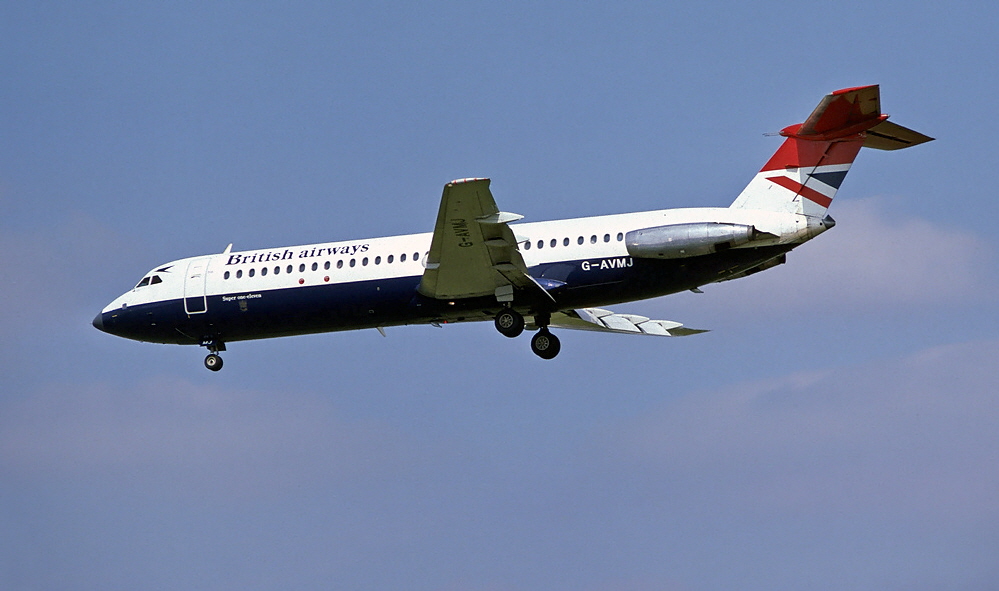 The British Aircraft Corporation One-Eleven, also known as the BAC 1-11 (and informally, The Pocket Rocket), was a short range jet airliner of the 1960s and 1970s. Conceived by Hunting Aircraft, it was developed and produced by the British Aircraft Corporation when Hunting merged into BAC along with other British aircraft makers in 1960.
The British Aircraft Corporation One-Eleven, also known as the BAC 1-11 (and informally, The Pocket Rocket), was a short range jet airliner of the 1960s and 1970s. Conceived by Hunting Aircraft, it was developed and produced by the British Aircraft Corporation when Hunting merged into BAC along with other British aircraft makers in 1960.
The One-Eleven was designed to replace the Vickers Viscount on short-range routes. Following the French Sud Aviation Caravelle, it was the second short-haul jet airliner to enter service. This gave it the advantage of more efficient engines and previous jet-airliner experiences, making it a popular model; over half its sales at launch were to the largest and most lucrative market, the United States. The One-Eleven made it to market ahead of rivals such as the McDonnell Douglas DC-9, which gave it a temporary edge on the market. The One-Eleven was one of the most successful British airliner designs, selling 244 aircraft world-wide, and served until its widespread retirement in the 1990s due to noise restrictions.
Several British operators, including Dan Air and British Caledonian, made extensive use of the type. Dan Air progressively increased the number of One-Elevens they had in service in the 1970s, eventually replacing their ageing first-generation de Havilland Comets with the One-Eleven entirely in the 1980s, with the type becoming the airline's main revenue generator. Dan Air would often lease One-Elevens to meet short-term demands; during periods of low demand Dan Air would also lease its own One-Elevens out to other operators; British Caledonian and Dan Air One-Elevens would often be exchanged between the two airlines on temporary and permanent arrangements. Passenger demand grew on several key One-Eleven routes, exceeding even the BAC 1-11 Series 500 aircraft’s larger capacity during the 1980s, which began to force airlines to use other planes. British Caledonian had begun replacing their One-Elevens with the new Airbus A320, when they were merged with British Airways in 1988 . In both Caledonian and British Airways service, the One-Elevens were a dominant type for the operator's European routes.
Prior to the formation of British Airways (BA), some of its predecessor companies, British European Airways and Cambrian Airways, had been operating the 1-11. British European Airways / British Airways 500 series aircraft varied significantly from other 1-11s, at the request of BEA. Their aircraft had a modified cockpit which incorporated instrumentation and avionics from or similar to that of the Hawker Siddeley Trident, for better commonality with the type. Their additional equipment included a more sophisticated autoflight system, which allowed autolandings and included an autothrottle. The modifications went as far as reversing the "on" position of most switches to match that of the Trident; indeed, this version of the 1-11 was so different from other 1-11 series aircraft that a different type rating was required to fly it. Their fleets would be inherited by BA; British Airways Regional Division found the performance of the One-Eleven more than adequate and sought to expand the airline's operations with the type, including further acquisitions, in the early 1970s in part to replace remaining Vickers Viscounts. BA's 400-Series One-Elevens all received names after areas and locations in the English Midlands, reflecting the type's new base at Birmingham Airport. BA ordered more Series-500 aircraft in the late 1970s and the airline received some of the last British-made One-Elevens.
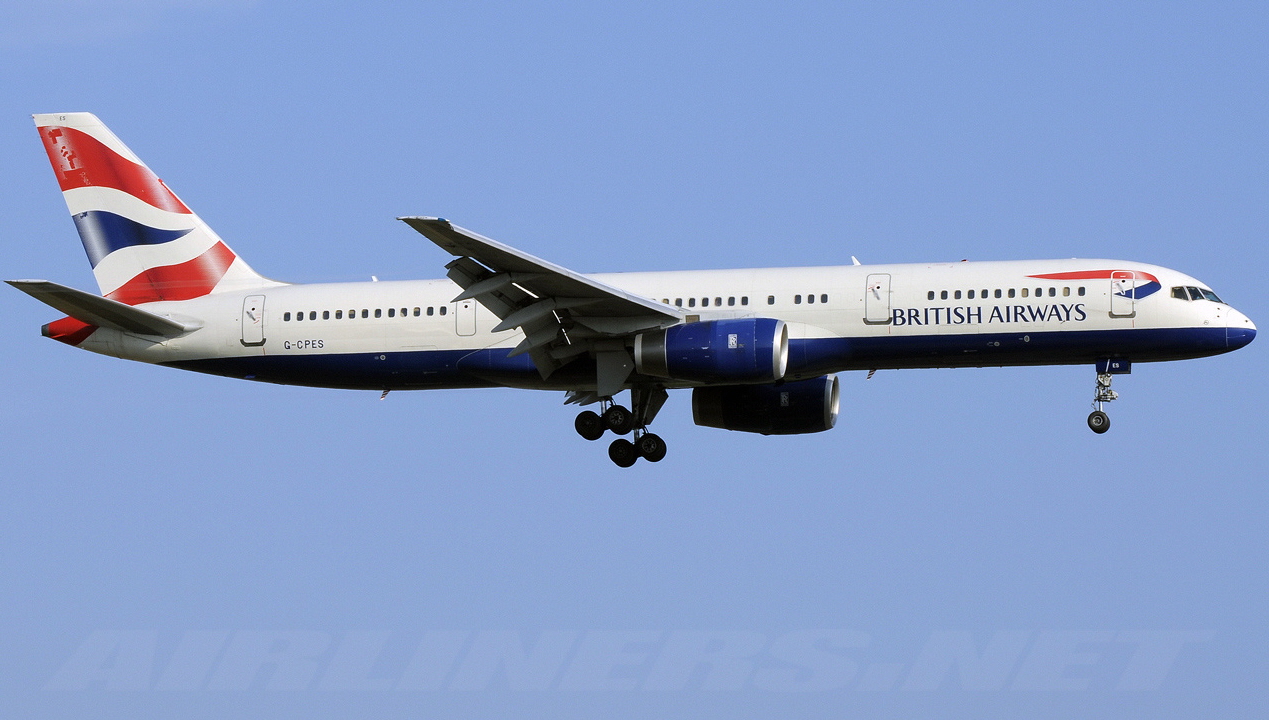 The Boeing 757 is a mid-size, narrow-body twin-engine jet airliner that was built by Boeing Commercial Airplanes from 1981 to 2004. It is the manufacturer's largest single-aisle passenger aircraft. The twinjet has a two-crewmember glass cockpit, turbofan engines, a conventional tail and, for reduced aerodynamic drag, a supercritical wing design. Intended to replace the smaller three-engine Boeing 727 on short and medium routes, the 757 can carry 200 to 289 passengers for a maximum of 3,150 to 4,100 nautical miles, depending on the variant. The 757 was designed concurrently with a wide-body twinjet, the Boeing 767, and owing to shared features pilots can obtain a common type rating that allows them to operate both aircraft.
The Boeing 757 is a mid-size, narrow-body twin-engine jet airliner that was built by Boeing Commercial Airplanes from 1981 to 2004. It is the manufacturer's largest single-aisle passenger aircraft. The twinjet has a two-crewmember glass cockpit, turbofan engines, a conventional tail and, for reduced aerodynamic drag, a supercritical wing design. Intended to replace the smaller three-engine Boeing 727 on short and medium routes, the 757 can carry 200 to 289 passengers for a maximum of 3,150 to 4,100 nautical miles, depending on the variant. The 757 was designed concurrently with a wide-body twinjet, the Boeing 767, and owing to shared features pilots can obtain a common type rating that allows them to operate both aircraft.
Production of the 757 ended on October 28, 2004, after 1,050 had been built for 54 customers. The 757-200 was by far the most popular model, with 913 built. Diminished sales amid an airline industry trend toward smaller jetliners led Boeing to end production without a direct replacement, in favour of the Boeing 737 family. The last 757 was delivered to Shanghai Airlines on November 28, 2005. In 2011, 898 of the narrow-body twinjets were in airline service, and Delta Air Lines was the largest operator, with 185 aircraft
The landing gear was purposely designed to be taller than the company's previous narrow-body aircraft in order to provide ground clearance for the longer, stretched models. In 1982, the 757-200 became the first subsonic jetliner to offer carbon brakes as a factory option, supplied by Dunlop (Concorde was the world’s first civil airliner to use a carbon braking system). The stretched 757-300 features a retractable tailskid on its aft fuselage to prevent damage if the tail section contacts the runway surface during takeoff.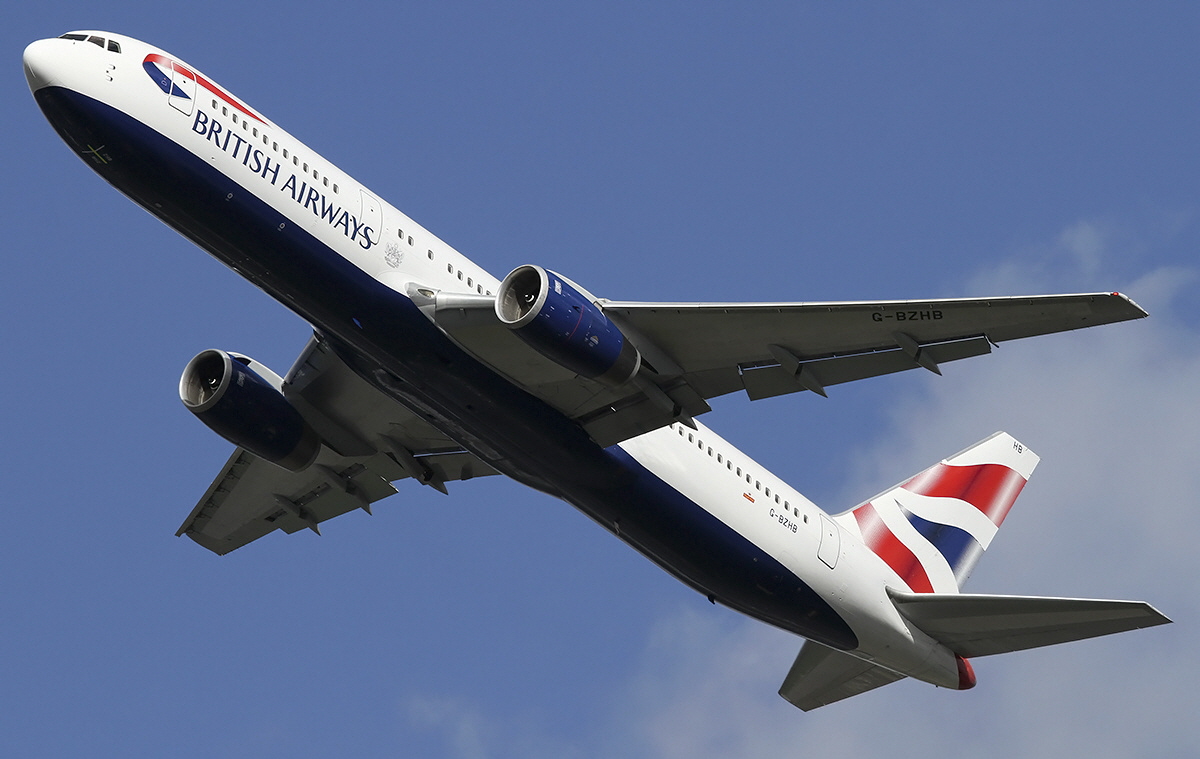
Besides common avionics and computer systems, the 757 shares its auxiliary power unit, electric power systems, flight deck, and hydraulic parts with the Boeing 767. Through operational commonality, 757 pilots can obtain a common type rating to fly the 767 and share the same seniority roster with pilots of either aircraft. This reduces costs for airlines that operate both twinjets.
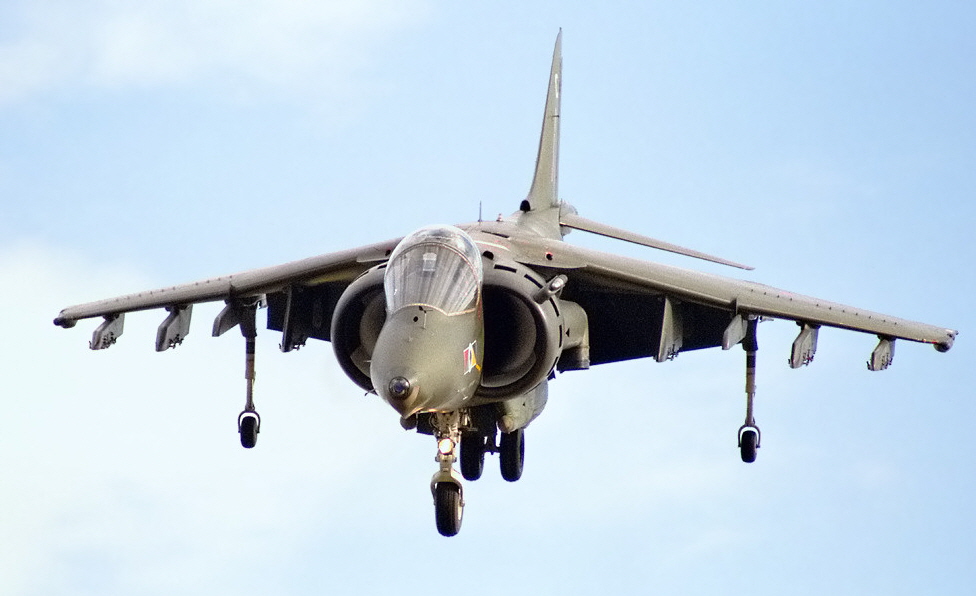 The Harrier, informally referred to as the Jump Jet, is a family of military jet aircraft capable of vertical / short takeoff and landing (V/STOL) operations. Historically the Harrier was developed in Britain to operate from ad hoc facilities such as car parks or forest clearings, avoiding the need for large air bases vulnerable to tactical nuclear weapons. Later the design was adapted for use from aircraft carriers. The Harrier is also distinct as being of modern era, yet subsonic, contrasting with most of the major Western post-World War II-era attack aircraft, which tend to be supersonic.
The Harrier, informally referred to as the Jump Jet, is a family of military jet aircraft capable of vertical / short takeoff and landing (V/STOL) operations. Historically the Harrier was developed in Britain to operate from ad hoc facilities such as car parks or forest clearings, avoiding the need for large air bases vulnerable to tactical nuclear weapons. Later the design was adapted for use from aircraft carriers. The Harrier is also distinct as being of modern era, yet subsonic, contrasting with most of the major Western post-World War II-era attack aircraft, which tend to be supersonic.
The aircraft was developed in the 1960s and formed the first generation of the Harrier series of aircraft. It was the first operational close-support and reconnaissance fighter aircraft with vertical / short takeoff and landing (V/STOL) capabilities and the only truly successful V/STOL design of the many that arose in that era. The Harrier was produced directly from the Hawker Siddeley Kestrel prototypes following the cancellation of a more advanced supersonic aircraft, the Hawker Siddeley P.1154. The Royal Air Force ordered the Harrier GR1 and GR3 variants in the late 1960s. It was exported to the United States as the AV-8A, for use by the US Marine Corps, in the 1970s.
The RAF positioned the bulk of their Harriers in West Germany to defend against a potential invasion of Western Europe by the Soviet Union; the unique abilities of the Harrier allowed the RAF to disperse their forces away from vulnerable airbases. The US Marine Corps used their Harriers primarily for close air support, operating from amphibious assault ships, and, if needed, forward operating bases. Harrier squadrons saw several deployments overseas. The Harrier's ability to operate with minimal ground facilities and very short runways allowed it to be used at locations unavailable to other fixed-wing aircraft. The Harriharrier 2er received criticism for having a high accident rate and for a time-consuming maintenance process.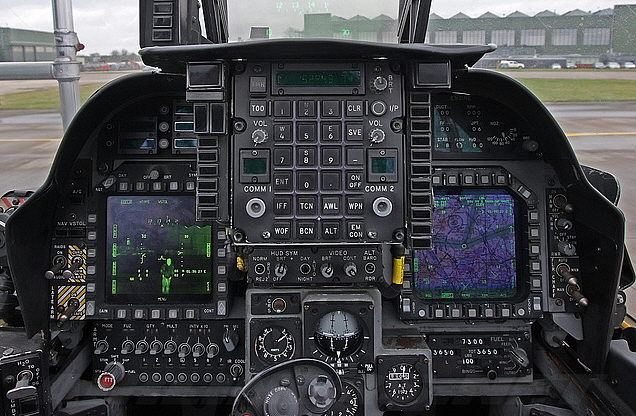
In the 1970s the British Aerospace Sea Harrier was developed from the Harrier for use by the Royal Navy on Invincible class aircraft carriers (that’s when we did have aircraft carriers). The Sea Harrier and the Harrier fought in the 1982 Falklands War, in which the aircraft proved to be crucial and versatile. The RN Sea Harriers provided fixed-wing air defence while the RAF Harriers focused on ground-attack missions in support of the advancing British land force. The Harrier was also extensively redesigned as the AV-8B Harrier II and British Aerospace Harrier II by the team of McDonnell Douglas and British Aerospace. The innovative Harrier family and its Rolls-Royce Pegasus engines with thrust vectoring nozzles have generated long-term interest in V/STOL aircraft.
The various versions of the Harrier was in service with the Royal Air Force from 1969 up until 2010, a total of 41 years. In the Royal Navy the Fleet Air Arm operated the Sea Harrier from 1980 up until 2006. In total, including aircraft destined for foreign forces (USA, Italy, India, Spain and Thailand), there were 824 Harriers built.
 The BAC Jet Provost (originally built by Hunting Percival) was a jet-powered trainer aircraft used by the Royal Air Force from 1955 to 1993. The Jet Provost was also successfully exported, serving in many air forces world-wide. A total of 741 aircraft were built.
The BAC Jet Provost (originally built by Hunting Percival) was a jet-powered trainer aircraft used by the Royal Air Force from 1955 to 1993. The Jet Provost was also successfully exported, serving in many air forces world-wide. A total of 741 aircraft were built.
The Jet Provost proved to be a capable trainer. After successful acceptance trials of the T1 during late 1955 at No. 2 Flying Training School at RAF Hullavington, the RAF formally accepted the type in 1957. The first production version was the T3, powered by the Viper 102, and this entered service with No. 2 Flying Training School, now relocated to RAF Syerston, during June 1959, when deliveries commenced from the Hunting Aircraft factory at Luton airport.
The later T4 was fitted with the more powerful Viper A.S.V. 11 of 2,500 lbs static thrust and first flew on 15 July 1960. It quickly entered service with several Flying Traininjet provost 2g Schools including No 1, No. 2, No 3 and No 6.
The T5 variant was further developed and fitted with the Viper 201 and cockpit pressurisation. These developments encouraged the RAF to utilise the Jet Provost in a number of different roles besides basic training. With a top speed of 440 mph, excellent manoeuvrability, mechanical reliability and low operating costs, the Jet Provost was utilized as an aerobatic aircraft, air warfare and tactical weapons training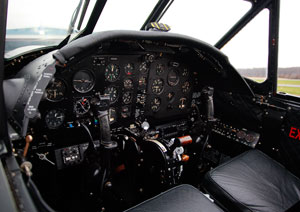 as well as advanced training. The first T5 made its maiden flight on 28 February 1967 and deliveries from BAC's Warton factory commenced on 3 September 1969. Operators of the T 5 included the RAFs Central Flying School and No. 1, No. 3 and No. 6 Flying Training Schools
as well as advanced training. The first T5 made its maiden flight on 28 February 1967 and deliveries from BAC's Warton factory commenced on 3 September 1969. Operators of the T 5 included the RAFs Central Flying School and No. 1, No. 3 and No. 6 Flying Training Schools
Besides service with the RAF, the Jet Provost found success in export markets. In total 741 Jet Provosts were built and many sold to overseas air forces (Iraq, Sudan, Ceylon, Kuwait, Portugal, Singapore, South Yemen, and Venezuela). They were withdrawn from RAF service in the early 1990s and replaced by Short Tucanos. The Jet Provost remains popular among enthusiasts and being an inexpensive jet, many are now in private hands. Some are flown at airshows.
 The Boeing 767 is a mid- to large-size, long-range, wide-body twin-engine jet airliner built by Boeing Commercial Airplanes. It was the manufacturer's first wide-body twinjet and its first airliner with a two crew glass cockpit with colour displays and new electronics replaced the role of the Flight Engineer by enabling the pilot and co-pilot to monitor aircraft systems directly. Despite the promise of reduced crew costs, United Airlines initially demanded a conventional three-person cockpit, citing concerns about the risks associated with introducing a new aircraft. A three-crew cockpit remained as an option and was fitted to the first production models. Ansett Australia ordered 767 aircraft with three-crew cockpits due to union demands; it was the only airline to operate 767 aircraft so configured. Development of the 767 occurred in tandem with a narrow-body twinjet, the 757, resulting in shared design features which allow pilots to obtain a common type rating to operate both aircraft.
The Boeing 767 is a mid- to large-size, long-range, wide-body twin-engine jet airliner built by Boeing Commercial Airplanes. It was the manufacturer's first wide-body twinjet and its first airliner with a two crew glass cockpit with colour displays and new electronics replaced the role of the Flight Engineer by enabling the pilot and co-pilot to monitor aircraft systems directly. Despite the promise of reduced crew costs, United Airlines initially demanded a conventional three-person cockpit, citing concerns about the risks associated with introducing a new aircraft. A three-crew cockpit remained as an option and was fitted to the first production models. Ansett Australia ordered 767 aircraft with three-crew cockpits due to union demands; it was the only airline to operate 767 aircraft so configured. Development of the 767 occurred in tandem with a narrow-body twinjet, the 757, resulting in shared design features which allow pilots to obtain a common type rating to operate both aircraft.
In February 1990, the first 767 equipped with Rolls-Royce RB211 turbofans, a 767-300, was delivered to British Airways. Six months later, the carrier temporarily grounded its entire 767 fleet after discovering cracks in the engine pylons of several aircraft. The cracks were related to the extra weight of the RB211 engines, which are 2,205 pounds (1,000kg) heavier than other 767 engines. During the grounding, interim repairs were conducted to alleviate stress on engine pylon components, and a parts redesign in 1991 prevented further cracks. Boeing also performed a structural reassessment, resulting in production changes and modifications to the engine pylons of all 767 aircraft in service
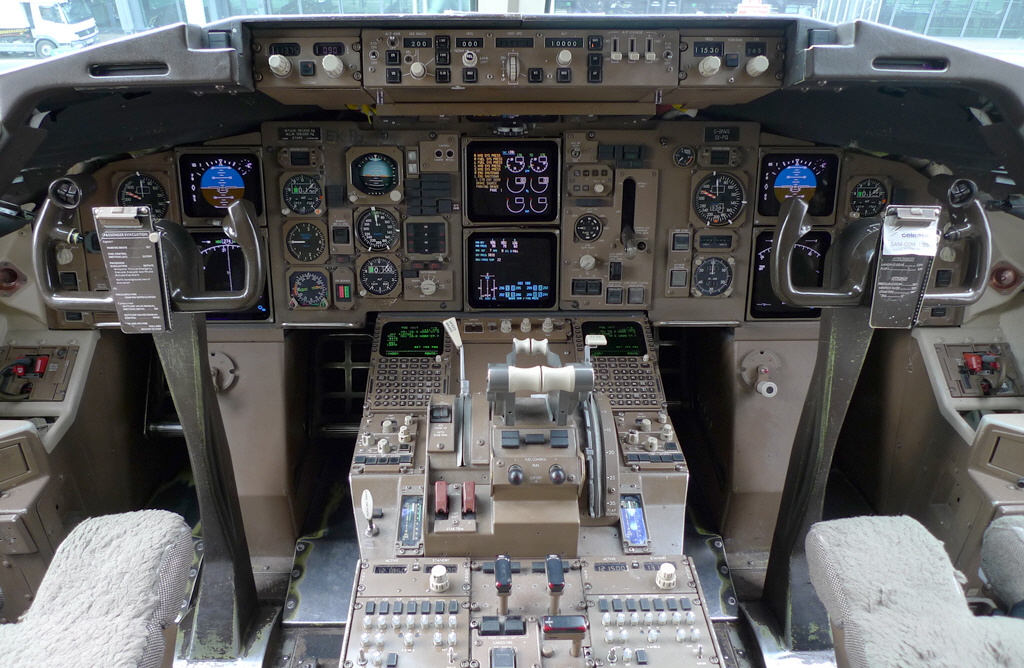 United Airlines first placed the 767 in commercial service in 1982. The aircraft was initially flown on domestic and transcontinental routes, during which it demonstrated the reliability of its twinjet design. In 1985, the 767 became the first twin-engined airliner to receive regulatory approval for extended overseas flights. The aircraft was then used to expand non-stop service on medium- to long-haul intercontinental routes. In 1986, Boeing initiated studies for a higher capacity 767, ultimately leading to the development of the 777, a larger wide body twinjet. In the 1990s, the 767 became the most frequently used airliner for transatlantic flights between North America and Europe.
United Airlines first placed the 767 in commercial service in 1982. The aircraft was initially flown on domestic and transcontinental routes, during which it demonstrated the reliability of its twinjet design. In 1985, the 767 became the first twin-engined airliner to receive regulatory approval for extended overseas flights. The aircraft was then used to expand non-stop service on medium- to long-haul intercontinental routes. In 1986, Boeing initiated studies for a higher capacity 767, ultimately leading to the development of the 777, a larger wide body twinjet. In the 1990s, the 767 became the most frequently used airliner for transatlantic flights between North America and Europe.
The 767 is the first twinjet wide-body type to reach 1,000 aircraft delivered and the 777 ranks as one of Boeing's best selling models, with 1,061 aircraft built to February 2014. The most popular variant is the 767-300ER, with 582 delivered; Delta Air Lines is the largest operator, with 94 aircraft. British Airways has 21 767-300 aircraft in the fleet, mostly used on the trans-Atlantic routes as well as some European destinations. Because of rising fuel costs, airlines have acquired the type as a comparatively fuel-efficient alternative to other wide body jets and have increasingly deployed the aircraft on long-haul transoceanic routes.
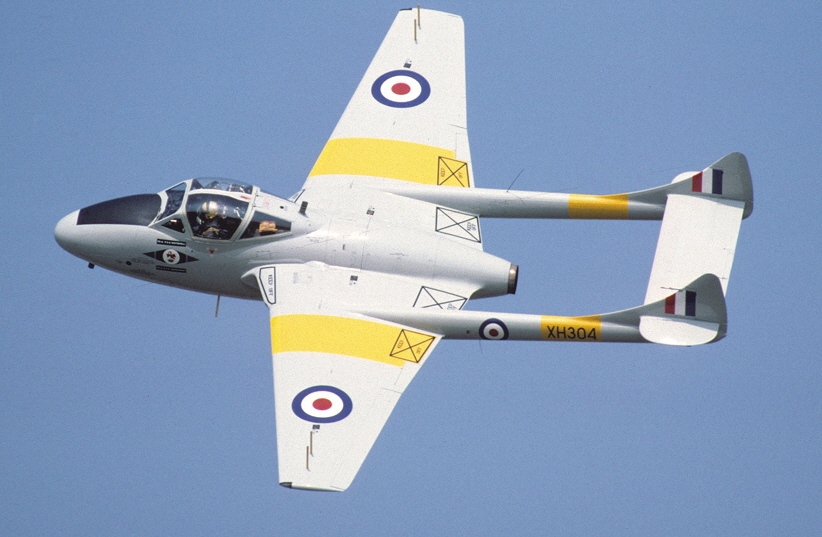 The de Havilland DH100 Vampire was a jet-engine fighter commissioned by the Royal Air Force during the Second World War. Following the Gloster Meteor, it was the second jet fighter to enter service with the RAF. Although it arrived too late to see combat during the war, the Vampire served with front line RAF squadrons until 1953 and continued in use as a trainer until 1966, although generally the RAF relegated the Vampire to advanced training roles in the mid-1950s and the type was generally out of RAF service by the end of the decade. The Vampire also served with many air forces world-wide, setting aviation firsts and records.
The de Havilland DH100 Vampire was a jet-engine fighter commissioned by the Royal Air Force during the Second World War. Following the Gloster Meteor, it was the second jet fighter to enter service with the RAF. Although it arrived too late to see combat during the war, the Vampire served with front line RAF squadrons until 1953 and continued in use as a trainer until 1966, although generally the RAF relegated the Vampire to advanced training roles in the mid-1950s and the type was generally out of RAF service by the end of the decade. The Vampire also served with many air forces world-wide, setting aviation firsts and records.
The Vampire was considered to be a largely experimental design due to its unorthodox arrangement and the use of a single engine, unlike the Gloster Meteor which was already specified for production. The low-powered early British jet engines meant that only twin-engine aircraft designs were considered practical; vamp cockpitbut as more powerful engines were developed, particularly Frank Halford's H.1 (later known as the Goblin), a single-engined jet fighter became more viable. De Havilland were approached to produce an airframe for the H.1, and their first design, the DH99, was an all-metal, twin-boom, tricycle undercarriage aircraft armed with four cannon. The use of a twin boom (similar to that of the Lockheed P-38) kept the jet pipe short which avoided the power loss of a long pipe that would have been needed in a conventional fuselage.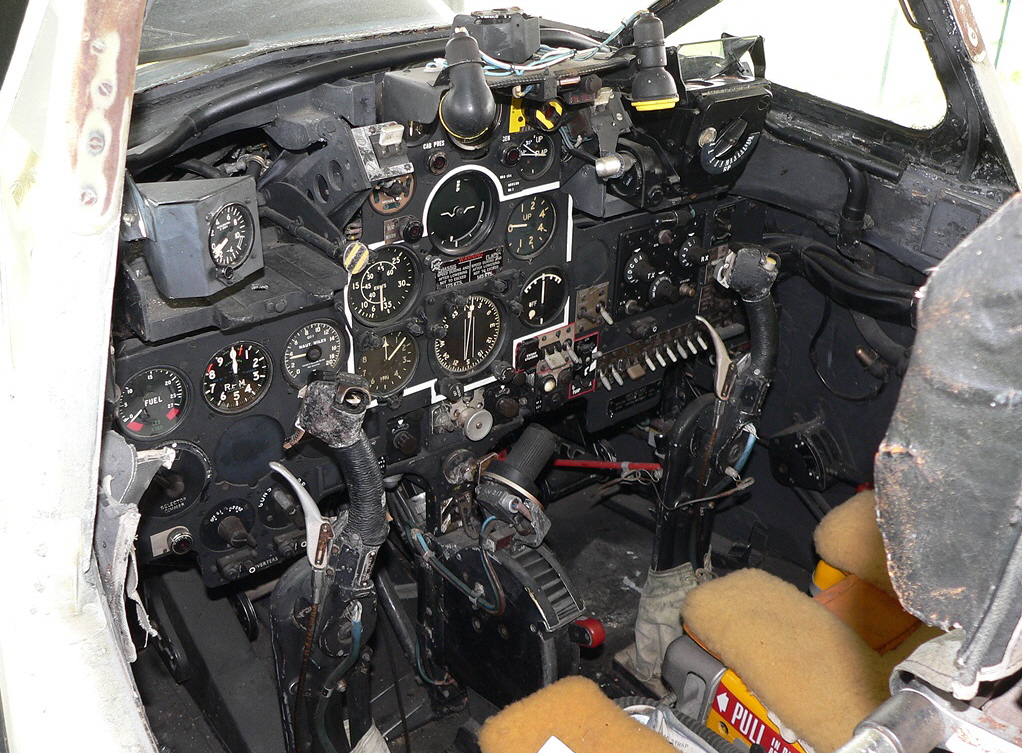
The final Vampire was the T (trainer) model, the T11, a two-seat training version for the RAF. Powered by a Goblin 35 turbojet engine; 731 were built by DH and Fairey Aviation. First flown in 1950, the T models remained in service with the RAF until 1966. There was a Vampire trainer in service at Central Flying School RAF Little Rissington until at least January 1972.
3,268 Vampires were built, a quarter of them under licence in other countries. The Vampire design was also developed into the de Havilland Venom fighter-bomber as well as naval Sea Vampire variants
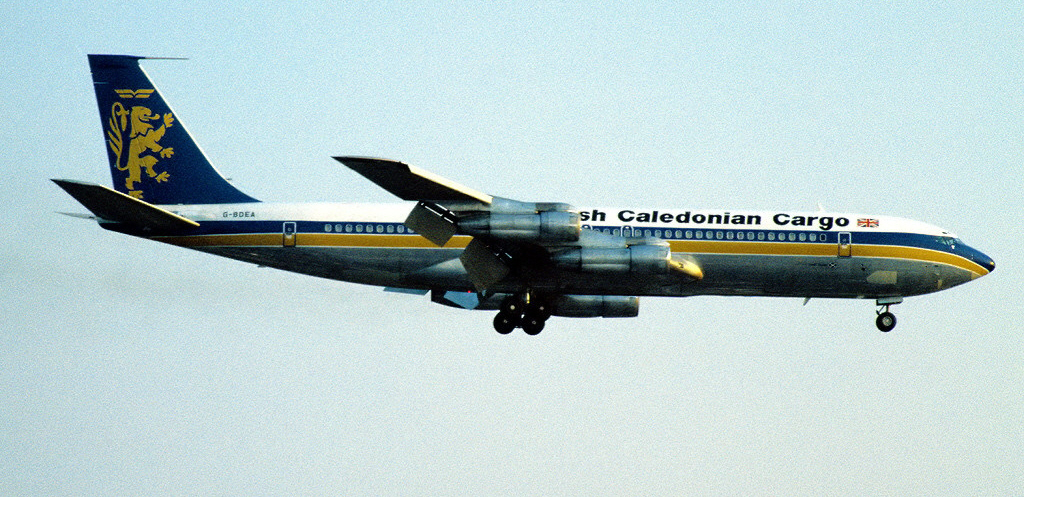 The Boeing 707 is a mid-size, narrow-body four-engine jet airliner that was manufactured by Boeing Commercial Airplanes from 1958 to 1979. Versions of the aircraft have a capacity of 140 to 202 passengers and a range of 3,680 to 3,735 nautical miles. Developed as Boeing's first jet airliner, the 707 features a swept-wing design with podded engines. the 707 is generally credited with ushering in the Jet Age. Although the distinction of being the first jetliner in service goes to the De Havilland Comet aircraft, the 707 was the first to be commercially successful world-wide and dominated passenger air transport in the 1960s, and remaining common throughout the 1970s. It established Boeing as one of the largest manufacturers of passenger aircraft, and led to the later series of aircraft with "7x7" designations. The subsequent 727, 737, and 757 also share elements of the 707s fuselage design.
The Boeing 707 is a mid-size, narrow-body four-engine jet airliner that was manufactured by Boeing Commercial Airplanes from 1958 to 1979. Versions of the aircraft have a capacity of 140 to 202 passengers and a range of 3,680 to 3,735 nautical miles. Developed as Boeing's first jet airliner, the 707 features a swept-wing design with podded engines. the 707 is generally credited with ushering in the Jet Age. Although the distinction of being the first jetliner in service goes to the De Havilland Comet aircraft, the 707 was the first to be commercially successful world-wide and dominated passenger air transport in the 1960s, and remaining common throughout the 1970s. It established Boeing as one of the largest manufacturers of passenger aircraft, and led to the later series of aircraft with "7x7" designations. The subsequent 727, 737, and 757 also share elements of the 707s fuselage design.
During its service career, the 707 has been used in a variety of roles, including domestic, transcontinental, and transatlantic operations. The 707 has also been used for cargo and military applications. A convertible passenger / freighter model, the 707-320C, entered service in 1963, and passenger 707s have been modified to freighter configurations. Military derivatives include the E-3 Sentry airborne reconnaissance aircraft and the C-137 Stratoliner VIP transports. During the 707s production run, Boeing produced and delivered a total of 1,011 aircraft, including the slightly smaller 720 series, in addition to over 800 military versions being produced. As of July 2013, only 10 examples of the 707 remain in airline service round the world.
Pete Carrigan cut his teeth working on the Boeing 707 as a licensed Engine and Airframe Ground Engineer, and this was the first aircraft type flown in their civil flying careers by both Pete Finlay and John Hutchinson
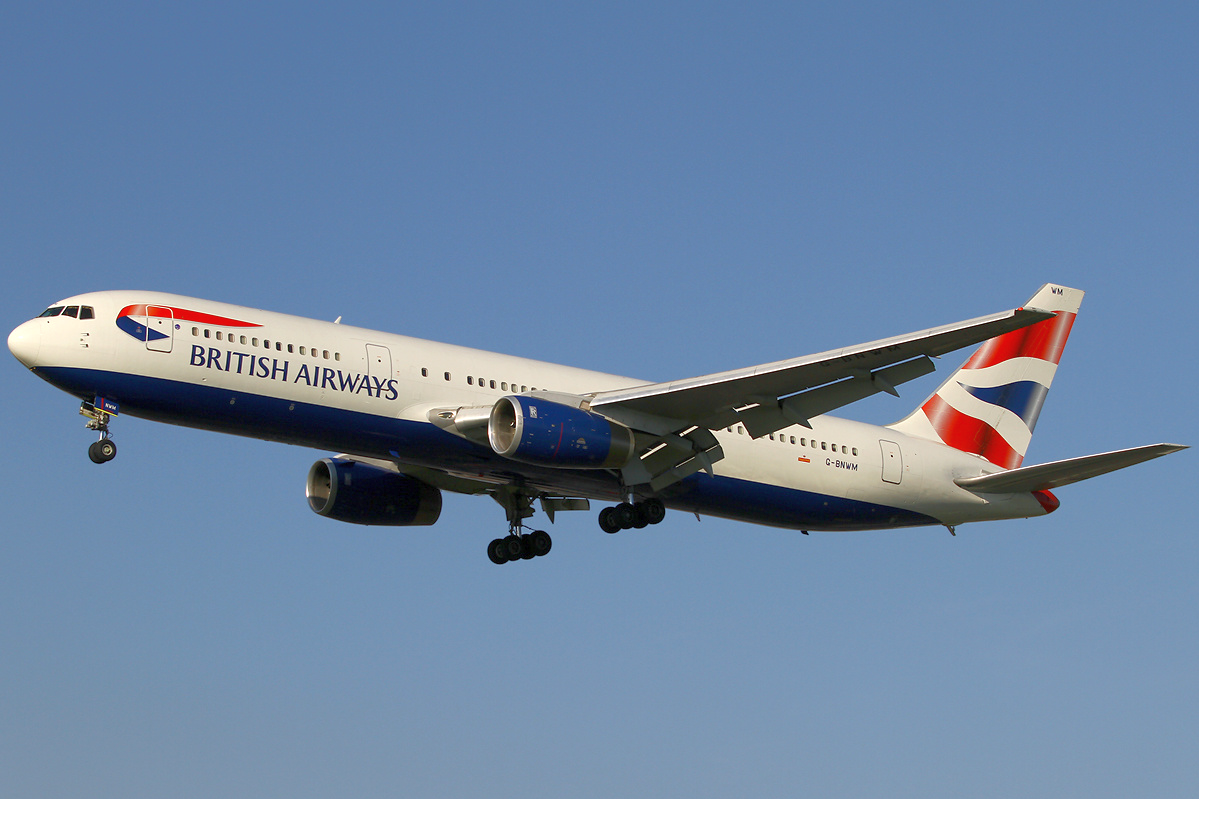 The 767-300ER, the extended-range version of the 767-300, entered service with American Airlines in 1988. The type's increased range is made possible by greater fuel capacity and a higher Maximum Take Off Weight of 407,000 pounds (185,000 kg), giving it a maximum range of 7,260 statute miles (11,690 km). Design improvements allowed the available Maximum Take Off Weight to increase to 412,000 pounds (187,000 kg) by 1993. Power is provided by either Pratt & Whitney PW4000, General Electric CF6, or Rolls-Royce RB211 engines.Typical routes for the type include Los Angeles to Frankfurt. The combination of increased capacity and range offered by the 767-300ER has been particularly attractive to
The 767-300ER, the extended-range version of the 767-300, entered service with American Airlines in 1988. The type's increased range is made possible by greater fuel capacity and a higher Maximum Take Off Weight of 407,000 pounds (185,000 kg), giving it a maximum range of 7,260 statute miles (11,690 km). Design improvements allowed the available Maximum Take Off Weight to increase to 412,000 pounds (187,000 kg) by 1993. Power is provided by either Pratt & Whitney PW4000, General Electric CF6, or Rolls-Royce RB211 engines.Typical routes for the type include Los Angeles to Frankfurt. The combination of increased capacity and range offered by the 767-300ER has been particularly attractive to 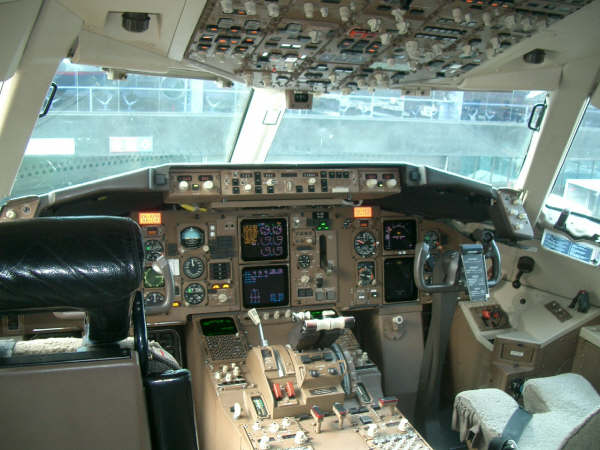 both new and existing 767 operators, allowing it to become the most successful version of the 767 family of aircraft. Airlines have placed more orders for the type than all other 767 variants combined. As of September 2014, 767-300ER deliveries stand at 583 with no unfilled orders and airlines had 495 examples in service as of July 2014. The type's main competitor is the Airbus A330-200.
both new and existing 767 operators, allowing it to become the most successful version of the 767 family of aircraft. Airlines have placed more orders for the type than all other 767 variants combined. As of September 2014, 767-300ER deliveries stand at 583 with no unfilled orders and airlines had 495 examples in service as of July 2014. The type's main competitor is the Airbus A330-200.
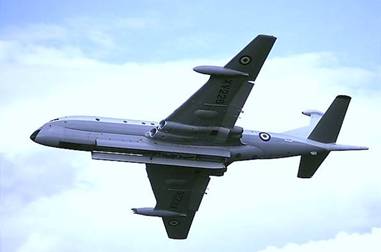 The Nimrod was arguably the best antisubmarine and Maritime Reconnaissance aircraft of the Cold War era. It was designed as a Royal Air Force maritime patrol aircraft, its major role being antisubmarine warfare (ASW), although it also had secondary roles in maritime surveillance, air-sea rescue and anti-surface warfare. It served from the early 1970s until March 2010 with 6 squadrons; 42 and 236 at RAF St. Mawgan; 120, 201, and 206 at RAF Kinloss; and 203 at RAF Luqa, Malta
The Nimrod was arguably the best antisubmarine and Maritime Reconnaissance aircraft of the Cold War era. It was designed as a Royal Air Force maritime patrol aircraft, its major role being antisubmarine warfare (ASW), although it also had secondary roles in maritime surveillance, air-sea rescue and anti-surface warfare. It served from the early 1970s until March 2010 with 6 squadrons; 42 and 236 at RAF St. Mawgan; 120, 201, and 206 at RAF Kinloss; and 203 at RAF Luqa, Malta
The development of the Nimrod patrol aircraft began in 1964 as a project to replace the Avro Shackleton. The Nimrod design was based on that of the Comet 4 civil airliner which had reached the end of its commercial life. The Nimrods were not modified Comets; rather they took the design of the Comet, modified it extensively, and then built new aircraft, which became the Nimrods. The Comet's turbojet engines were replaced by Rolls-Royce Spey turbofans for better fuel efficiency, particularly at the low altitudes required for maritime patrol. Major fuselage changes were made, including an internal weapons bay, an extended nose for radar, a new tail with electronic warfare (ESM) sensors mounted in a bulky fairing, and a MAD (Magnetic anomaly detector) boom. After the first flight in May 1967, the RAF ordered 46 Nimrod MR1s. The first example (XV230) entered service in October 1969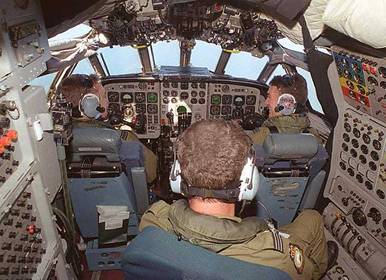
The Nimrod was the first jet-powered Maritime Patrol Aircraft (MPA). Jet engines are most economical at high altitudes and less economical at low altitudes; the aircraft travelled to the operational area at high altitude, which was economical on fuel and fast compared to earlier piston aircraft. On reaching the patrol area the Nimrod descended to its working altitude, often as low as 200 feet (or 100 feet in wartime). Once on patrol at high weight all four engines are used, but as fuel is consumed and weight is reduced first one and then a second engine is shut down, allowing the remaining engines to be run at an efficient RPM rather than running all engines at less efficient RPM. All engines were used for travel back to base at high altitude.
The Nimrod gave sterling service during the "Cod Wars" between Iceland and the UK over fishing rights in the 1970’s. During the Falklands war (Operation Corporate), several Nimrods combed the sea for enemy submarines. The Nimrods took part in Operation Granby (the Gulf War 1990 / 1991), the NATO operations against Serbia in 1999, Operation Telic (the Iraq war in 2003 and beyond), the campaign in Afghanistan, and over Libya in 2011. They also were a routine component of British Search and Rescue (SAR) operations in the North Sea. The Nimrod had an impressive range for a Maritime Patrol aircraft of nearly 6,000 miles, and also had the longest bomb bay of any military aircraft flying. Under the wing it could carry air-to-air missiles (Sidewinder AIM-9, during the Falklands War) and air-to-surface missiles (Nord AS12, Martel, Maverick or Harpoon). In the bomb bay it could carry air dropped torpedoes, depth charges, nuclear depth bombs, naval mines, sonobuoys, and survival equipment.
This was Pete Finlay’s first operational aircraft during his RAF service and he flew the aircraft on 120 Squadron at RAF Kinloss from 1975 to 1979. He took part in the Cod Wars around Iceland in 1975 and 1976 as well as antisubmarine and reconnaissance operations, mainly over the North Sea. He also took part in many Search and Rescue operations, including the Fasnet Yacht Race disaster in August 1979.
Page 1 of 2
